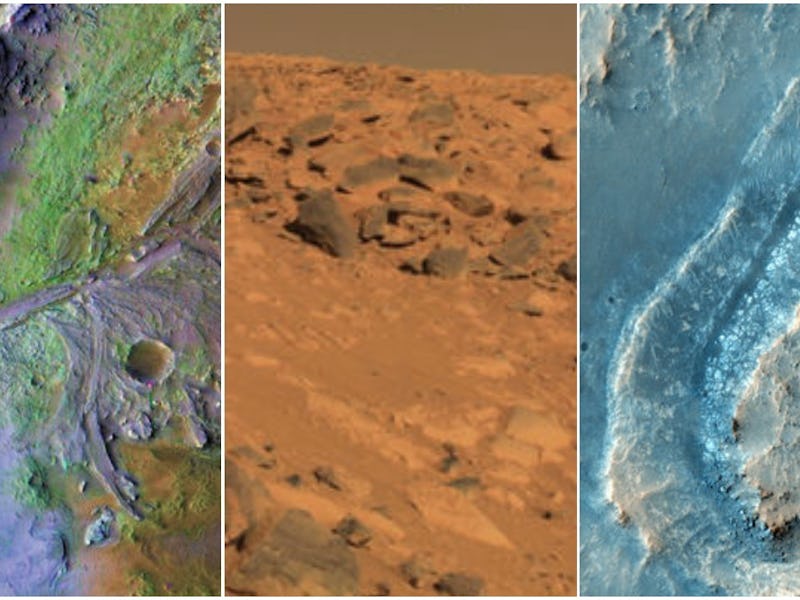In just three years, NASA plans on sending a new rover to Mars to hunt for any signs of life. It’s a big endeavor, and on Monday night, the agency revealed that it has selected three finalists for the landing site. One, which was visited by a much-older — now broken — rover was once full of hot springs. Another was a lake that dried up and replenished itself over the years. The third was heated volcanic activity. Any one of these three locations might contain clues that would prove the existence of life on Mars. Now, NASA just needs to decide which one of them their rover will explore.
Experts met on February 8 - 10 for the Mars 2020 mission’s third workshop, NASA’s website explains. Back in 2015, the second of these workshops narrowed down the list of a possible 30 landing sites to an elite eight, and now there are only three. Here they are:
Option one.
Columbia Hill, Gusev Crater
“Mineral springs once burbled up from the rocks of Columbia Hills. The discovery that hot springs flowed here was a major achievement of the Mars Exploration Rover, Spirit,” NASA website explains, noting that this was the only part of the 100-mile-wide Gusev Crater that showed signs of water past water. Spirit stopped working in 2010, but before it died, the rover found evidence that Gusev might’ve held a shallow lake at one point. Will the Mars 2020 rover finish what Spirit started?
Option two.
Jezero Crater
Over 3.5 billion years ago, experts think that water from river channels might’ve spilled into the Jezero Crater, creating a lake. This lake drained and was replenished as least twice, NASA says, and the water brought clay materials into the crater when it flowed in. “Conceivably, microbial life could have lived in Jezero during one or more of these wet times,” NASA says. “If so, signs of their remains might be found in lakebed sediments.”
Option three.
NE Syrtis
“Volcanic activity once warmed NE Syrtis,” NASA says. “Underground heat sources made hot springs flow and surface ice melt. Microbes could have flourished here in liquid water that was in contact with minerals.”
Now, NASA needs to decide who the lucky site is going to be. Ultimately, the site needs to best meet the Mars 202 mission’s criteria. “Can the Mars 2020 rover achieve all of the mission’s scientific objectives at this site?” NASA asks.
“Does the area show signs in the rock record that it once had the right environmental conditions to support past microbial life? Does the area have a variety of rocks and ‘soils’ (regolith), including those from an ancient time when Mars could have supported life?”
Where is the rose — excuse me — where is the rover going to go?
The mission is expected to launch in July of 2020, naturally. NASA will most likely reveal its final selection about a year before the launch date.
